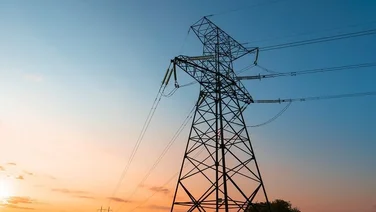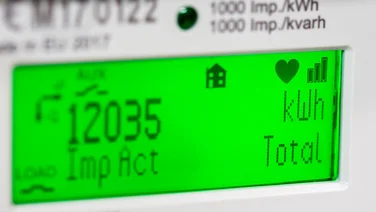- What is passive ventilation?
- What are the benefits of passive ventilation?
- What are the disadvantages of passive ventilation?
- Types of passive ventilation
- How to set up passive ventilation in your home
- Is your property suitable for passive ventilation?
- How much does passive ventilation cost to set up?
- Where is passive ventilation most popular?
- Summary
- Passive ventilation: FAQs
✔ Passive ventilation used natural forces to move both hot and cool air around buildings
✔ The two main types make use of the fact that hot air rises, and cool air sinks
✔ No additional energy use is required to power passive ventilation
Passive ventilation makes use of some of the oldest ventilation techniques in the book.
Since ancient times, we’ve made use of wind, either with different building techniques or through use of cooler currents at higher elevations. And we’ve maximised the impact of the natural tendency of hot air to rise, and cool air to fall.
Simply put, passive ventilation makes the most of our environment to ventilate our homes.
It also requires no additional energy to run, making it an essential tool in our attempts to cut emissions and reach net zero.

What is passive ventilation?
Passive ventilation is a way of combining building techniques and natural elements to increase airflow and regulate air temperature within a building.
It’s also known as passive stack ventilation (PSV), or natural ventilation.
How does passive ventilation work?
Some kinds of passive ventilation are based on techniques we’ve used since ancient times, others use sophisticated physics and technology.
The key element to passive ventilation, though, is that air is able to flow naturally through a building without any mechanical systems, such as a fan, or air conditioning.
Passive stack ventilation can be done in a variety of ways, including wind-driven ventilation, the Venturi effect, and buoyancy ventilation.
Broadly speaking, wind-driven ventilation relies on the wind to move the air across a building. This includes cross ventilation, single-sided ventilation and using windcatchers.
The Venturi effect works using constricted areas, such as pipes, to move air around. It’s based on Bernoullii’s Principle, which states air moves faster when it’s in a restricted area. When the air moves faster, the pressure drops – as does the temperature.
Buoyancy ventilation makes use of the fact that warm air rises, and cooler air sinks. Stack ventilation is a common example of this.
We’ll explain the different types of ventilation in more detail below.
What are the benefits of passive ventilation?
- Natural: makes use of the environment around us
- Green: no additional energy required
- Resilient: independent of external power sources
- Cost-effective: no expensive equipment needed
- Low maintenance: very little upkeep required
- Long-lasting: the parts required are built to last
- Quiet: no mechanical noise
- Cooling: removes heat from your home
- Dehumidifying: removes moisture from the air
Passive ventilation is a versatile approach that can be easily adapted to different user needs.
Once installation costs have been taken into account, it’s also cost effective: not only does it not require expensive machines, but it saves energy use and reduces costly and potentially hazardous issues such as damp and mould.
What are the disadvantages of passive ventilation?
- Restricted use: passive ventilation only works in specific environments
- Weather dependent: may not function in extreme conditions
- Hard to control: quality may differ within individual rooms
- Danger of blocking: ventilation areas can get covered over
- Can create draughts: this can impact older buildings
- Security concerns: leaving vents open may facilitate access
- Noise & pest concerns: less protection from noise or insects
- Visually unappealing: not all natural ventilation design is aesthetically pleasing
The major disadvantage to passive ventilation is that it’s entirely dependent on climate: what works well in a country with reliable wind, for example, won’t achieve the same results in a more sheltered – or urban – environment.
Within that, there is the added challenge that the system can be hard to control and regulate – when it comes to addressing the different air flow pressures around a house, for example, it can feel like a blunt tool.
There is also the fact that some may not like the element of exposure that some passive ventilation methods require, whether you’re worried about intruders, neighbourhood noise, or mice.

Types of passive ventilation
There are multiple different approaches to passive ventilation. They can be broken down into two main categories, wind-driven ventilation types and buoyancy-driven ventilation types.
Wind-driven ventilation types
Cross ventilation: this relies on allowing the wind to move into the building through an inlet – such as an open window – and pushing hot air out via an outlet in the roof, for example, a roof window. This ensures fresh air is circulated around a building.
Single-sided ventilation: this is often used in urban settings, where cross-ventilation isn’t possible. It might be as simple as opening a window to allow fresh air in.
Windcatchers: these look a lot like chimneys, and have been used since ancient times to collect cool breezes and direct them into the building.
Night cooling: this involves keeping windows and other ventilation closed during the day and opening them at night to release the warm air.
Buoyancy-driven ventilation types (H3)
Stack ventilation: this works on the basis that when the air inside a house or building is hotter than it is outside, the air will rise.
The hot air can then be released through vents at the top of the house. Cool air will then naturally come in to replace – or ‘stack’ up under – the warm air. Venturi tubes can be helpful to facilitate this (see below).
Venturi effect ventilation: this involves integrating tubing into the building to increase the speed at which the air moves, and decrease the pressure.
It’s often used with other ventilation methods, such as the stack effect Tubing might also be included in the roof line to help cool where the air is hottest.
Intelligent vs non-intelligent passive ventilation
The major difference here is the responsiveness of your passive ventilation system.
Non-intelligent passive ventilation, a category most of the more traditional methods fall into, is always open, irrespective of any changes in weather or temperature.
Intelligent passive ventilation, however, is able to respond to changes in humidity by using humidity sensing vents. This then enables the vent to open or close, depending on humidity levels. Handily, they also don’t need any electricity to work.
How to set up passive ventilation in your home
Obviously this will depend on the type of passive ventilation you choose, your local environment, and whether you are starting from scratch or converting an older property.
It also depends on what you’re prepared to invest: do you want a builder to drill an inlet into a wall, or do you need your windows positioned opposite each other to maximise cross ventilation in a specific room?
Either way, we recommend you contact a heating and ventilation specialist to discover which approach would be right for you and your home.
Is your property suitable for passive ventilation?
In theory, any house should be suitable for some level of passive ventilation, although the location of your house, and local levels of heat and humidity (see below) will have an impact.
With a new build, the ideal would be to request that passive ventilation be factored in from the start – you should check what is included in the plans, or what exists already in a relatively new house.
Older houses can provide a variety of challenges in that adding in passive stack ventilation attributes can be unsightly, and, in a conservation area, this may not be allowed.
The other, more common issue, is that older houses are prone to greater draughts, and this may compromise any passive ventilation system you are hoping to install.
How much does passive ventilation cost to set up?
As outlined above, there are multiple factors that will impact on how much passive ventilation stacks will cost to set up, including the type, where you live and the kind of property you live in.
Some methods, such as cross ventilation, might just require you to be strategic with existing windows, or the cost of adding in additional vents, while others, such as Venturi tubes or wind catchers, would require considerable structure builds.
The good news is that however much you need to invest in installing passive ventilation, your operating costs will be negligible.
Where is passive ventilation most popular?
Different methods of passive ventilation are effective in different environments, which obviously impacts on their popularity.
While there’s no data as to where it’s most popular, In 2017, a Harvard University study identified where passive ventilation was most suitable: top of the list was South-Central Mexico, the Ethiopian Highlands and Southwest China, thanks to their consistent spring-like temperatures.
This was closely followed by the Mediterranean climate, which can also be found in California, Western Australia, Portugal, and Central Chile. It also found that Central Australia and the Middle East would benefit from night cooling.
But there are also some countries that are too hot and humid for passive stack ventilation to work, including Singapore and Malaysia.
Of course, in many places, passive ventilation methods have been used for centuries: wind catchers, for example, date back to Ancient Egypt and have been hugely popular throughout the Middle East.
And the interest in passive ventilation is also only likely to grow: a 2022 briefing from the European Environment Agency on cooling buildings sustainability in Europe strongly recommended “prioritising investment in passive cooling techniques”.
How many homes in the UK use passive ventilation?
According to the BBC, around 7,000 wind catchers were installed in public buildings toward the end of the 20th century, including iconic buildings such as the Royal Chelsea Hospital in London.
Despite this, there is currently no information available as to how many homes in the UK use passive ventilation.
What is clear, though, is that the number is likely to grow.
Last year, the Climate Change Committee commissioned a report on the future risks posed by summertime overheating in the UK
For further ways to cope with the heat, read our guide to how to keep your house cool in summer.
Summary
People have used passive ventilation for millions of years to help heat, cool and help ventilate their homes.
As the desire to embrace more sustainable housing options grows – coupled with the need to cool our homes as the environment heats up – it’s going to become an increasingly useful option to us.
Passive ventilation is by no means a perfect solution, and the right choice for you will very much depend on where, and how, you live, but it is a potentially environmentally-friendly, effective and budget-friendly way to ventilate your home.
Passive ventilation: FAQs
What is a passive ventilation system?
A passive ventilation system is a means of cooling, heating and ventilating your home, without using electricity. Generally, it uses the structural elements of buildings, such as windows and vents, to encourage air flow.
What is an example of passive ventilation?
Wind catchers have been used since ancient times to catch the cool breezes that occur naturally at a higher elevation. They look a little like chimneys, and are designed to suck air down to cool the building below.
What are the methods of passive ventilation?
Passive ventilation methods are driven by natural principles. The two main ones are wind-driven, which uses the wind to move air through a building, and buoyancy-driven, which is based on the fact that hot air rises, and is replaced by cold air.






